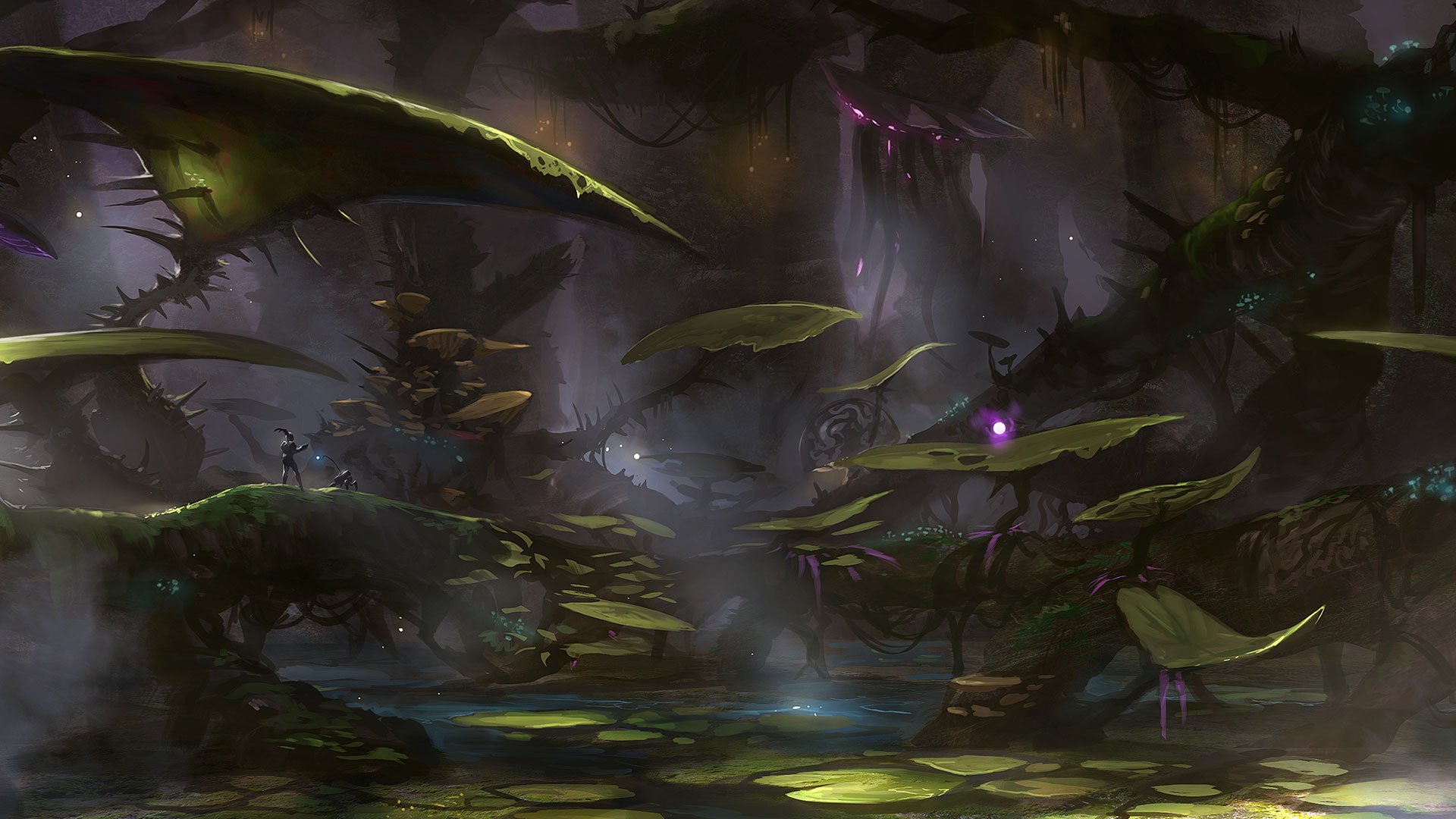Illuvium — for making gaming pay
Parse the jargon and hyperbole on “web3”, and you end up with a whole lot of weirdness and yet another set of issues that seem to divide the world.
Take NFTs in gaming. Electronic Arts’ CEO describes blockchain games and NFTs as “the future of our industry”. While Valve says, it won’t entertain any of it. And Xbox’s Phil Spector says it’s potentially “exploitative”.
Gamers themselves are unconvinced. For example, when Ubisoft Quartz launched with Digit NFTs (to be fair, a mostly cosmetic web3 offering), PC Games magazine described it as “snake oil”, and 38,000 gamers gave the launch video a resounding thumbs down. After years of enduring in-game micro-transactions, loot crates, and battle passes that often come at the expense of game progression, gamers are understandably skeptical of anything that smells like new ways to monetize their time spent.
The Abyssal Grove, a dense mangrove-like forest in the game. Credit: Illuvium.
The so-called “play-to-earn” model—where gamers earn and own crypto and NFTs by playing a game—messes with this equation as gamers own what they earn and can trade or sell it as they see fit.
Axie Infinity, a game where cute, Pokémon-like Axies battle each other to earn AXS or SLP tokens, has well over a million daily users and made its Vietnamese parent $343m in fee revenue in a single month in 2021. Fifty per cent of Axie’s daily users are based in the Philippines, where a committed player can earn 5-10x the average daily wage playing the game and make it their livelihood. Critics say Axie Infinity is more a pay-to-play model as players must buy game characters to get started, but clearly, many gamers are sold, and a new kind of financial services sector has sprung up to lend the seed capital that helps new players quickly level up — some players have even bought apartments from proceeds. Believers see this new model providing millions of “jobs” in the developing world in the future. Like I said, weird. Meta, in fact. But it’s this share in value that differentiates play-to-earn from typical Web 2.0 (Big tech social media companies) who extract all the value and keep it for themselves.
Enter Illuvium to pour gasoline on this trend. It’s the first AAA quality game in the play-to-earn space, built on the Ethereum network. It’s both a role-playing and auto-battler game that uses Unreal Engine 4 to deliver the kind of cinematic quality and 3D effects that mainstream gamers demand — and Axie Infinity lacks. In exploration mode, players hunt, capture and fuse together deity-like creatures called Illuvials, which are NFTs players own. Then, players take their Illuvials into the auto-battle mode, where they fight alongside their Illuvials against computer opponents and other players to make progress in the game and earn ILV tokens. In Illuvium, the NFT is not simply a financial reward for playing but is a game asset that grows in value while directly affecting the ability to progress in the game — it is an integral part of a better gaming experience. The player who discovers an Illuivial owns that Illuvial, verified by the blockchain. Illuvials can then be traded for strategic advantage or even actual fiat currency within the game’s exchange.
Illuvium is being run as a decentralized autonomous organization — the Illuvium DAO will give a strong voice to players in policy and procedures via the election of an Illuvinati Council. Players have both a financial stake and a say in how the Illuvium ecosystem and economy is run. This more clearly aligns incentives between the development team and community and, presumably, is what will protect the game from the kind of egregious monetization or other nefarious acts that might dog a publicly-traded gaming company under pressure to maximize shareholder return. This redistribution of power is a crucial feature of a web3 operation and what makes Illuvium so fascinating to watch.
We’ll be looking to Illuvium to create both a shift in value and a shift of values within gaming.






















